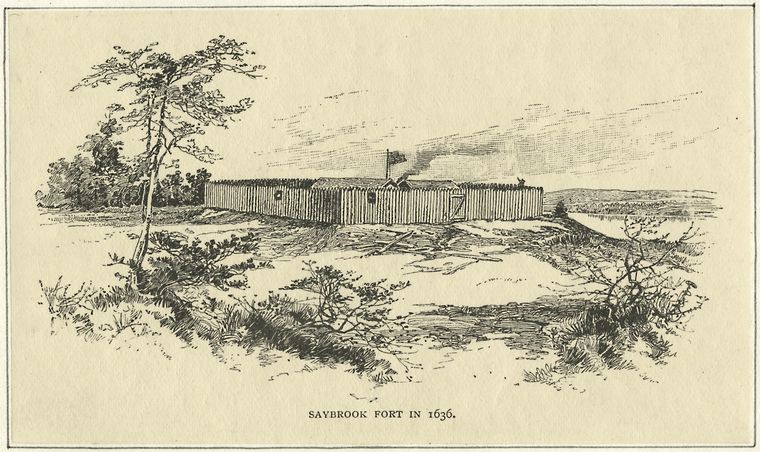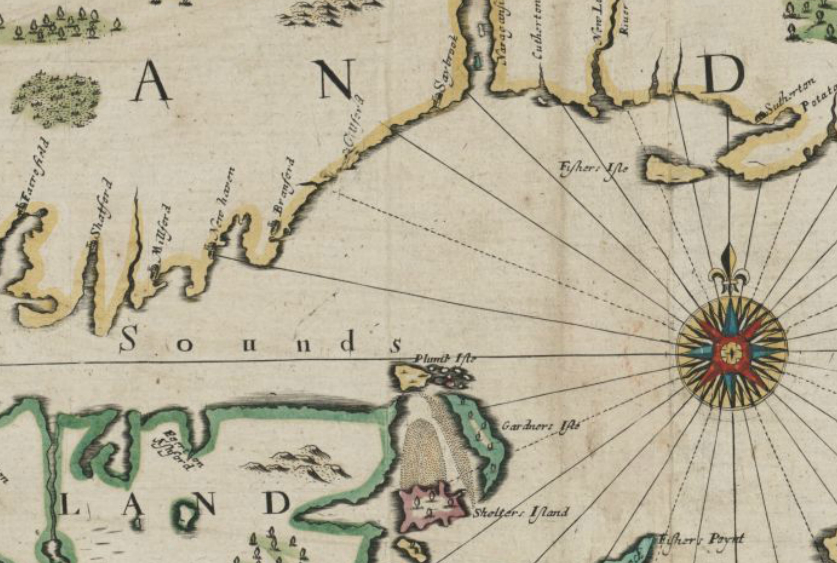In 1635, the governor of the Saybrook colony hired engineer and soldier Lion Gardiner to build a critically needed fort for protection from both the Dutch colonists and local Native American tribes. Gardiner’s orders not only called for him to build and man the fort but to design the layout of the town as well. This plan provided the basis for parts of what would become modern-day Old Saybrook.
Birth of a Colony
In 1631, the Earl of Warwick, who was president of the Council for New England, signed a deed of conveyance for the land that became the Saybrook colony. Viscount Saye & Sele and Lord Brook were among the 11 men granted land, and it was in tribute to these two men that the colony got its name.
In the early days of the colony the original English landholders, along with four more added in 1632, claimed for themselves a stretch of wilderness that reached from the Narragansett River in present-day Rhode Island, down to what is now Greenwich, and then west all the way to the Pacific Ocean. Securing this terrain was no small undertaking, particularly because various Native groups had long-held ties to the land.
The 15 patentees commissioned their first governor, John Winthrop Jr., in 1635. Winthrop’s job was to secure this new settlement for its owners and protect it from the growing threats posed by the Dutch and Native Americans, who saw their claims as no less valid. Winthrop hired Lion Gardiner to build the fort the following March. Gardiner arrived at Saybrook Point on November 24, 1635, with 18 men and several women and children. Among these new arrivals was Gardiner’s wife, who gave birth the following spring to the first European child born in the new colony.

Illustration of Saybrook Fort in 1636 – New York Public Library Digital Gallery
Escalating Tensions
After completing construction, Gardiner stayed on to command the fort until 1639. During this time he faced numerous challenges as competition to control area resources and trade intensified. The Pequot, who had successfully waged war on other local Native American tribes to achieve economic and political dominance in the region, sought to maintain their advantage. For their part, the English in Connecticut and Massachusetts hoped to break the Dutch-Pequot control of the fur and wampum trade. They often found willing allies among the tribes the Pequot had subjugated. A series of escalating confrontations and retaliations ensued that culminated in what became known as the Pequot War among the English.
It was within this context, that, in 1636, the Pequot attacked Saybrook’s Cornfield Point and Guardhouse Point, destroying numerous settlement buildings in the process. It took an alliance of the Massachusetts Bay Colony, and a number of Mohegan and “River Indians,” to eventually push the Pequot out of the area.
After finishing his work at the Saybrook colony, Lion Gardiner purchased an island in Long Island Sound that is still known today as Gardiners Island. In 1660, he wrote a firsthand account of the Pequot Wars that, after being lost among various state archives, was finally rediscovered in 1809 and published in 1833. Gardiner died in 1663 in what is now East Hampton, New York. Fort Saybrook Monument Park in Old Saybrook is a testament to Gardiner’s engineering and military prowess and tells the story of Gardiner, the fort he built, and the growth of the early Saybrook colony.









